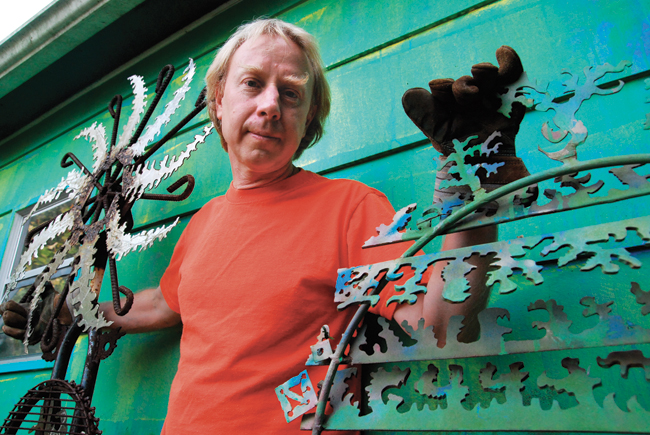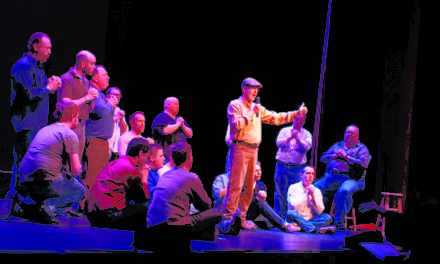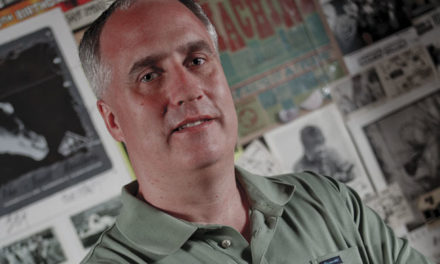BY NANCY HILLER
In his luxuriant garden of sunflowers, fennel, and bee balm, Nick McGill wears a protective helmet as he welds salvaged machine parts together, turning them into coat racks, candlesticks, and other functional wares. Chunky gears, smooth rods, and oversized ball bearings sprout through the foliage amid rare varieties of poppy and cactus—a juxtaposition that seems perfectly natural to this artist.
Cacti and old machinery are McGill’s great loves. During the 1980s, when he was a biology major with a focus on the environment, McGill visited the deserts of the American Southwest and became enchanted by the subtle colors, wide variability, and sheer tenacity of cactus, a family of plants that are strikingly adaptable to inhospitable surroundings. But he was dismayed to learn that many cactus species were endangered.
A welding course at The Waldron [now Ivy Tech John Waldron Arts Center] in 1997 gave McGill a way to celebrate the heritage of old machine components, as well as give them new life. “I think I had always wanted to weld and just never had a chance,” he says, comparing the process to “gluing together popsicle sticks at camp.” He began experimenting with old parts found at salvage yards and was soon selling his candlesticks and animal sculptures at The Waldron and By Hand Gallery. His larger work can be seen in many Bloomington venues, both public and private.
One of his signature garden arches—a postmodern twist on Monet’s arbors—was commissioned for the Lotus Festival in 2003 and now marks the entry to a yard in the Near West Side neighborhood. His outdoor sculpture at WonderLab offers a playful opportunity to learn about acoustics; children are encouraged to drop pieces of gravel into the open top of a three-sided, steel pyramid. An Art Nouveau-style handrail outside the restaurant Roots on the Square is fashioned from an early 20th-century plow, assorted stove parts, and a screw-down dog tie that shines in the sun.
McGill sees parallels between the desert cactus and discarded industrial equipment in the contemporary urban landscape, where large-scale manufacturing has all but disappeared. In addition to being at risk, both possess a beauty that’s austere and defiant.
“These parts represent our industrial culture,” says McGill, who has transformed some of the components into benches and tables to house his dazzling array of potted cactus. He’s working to ensure a future for both.











